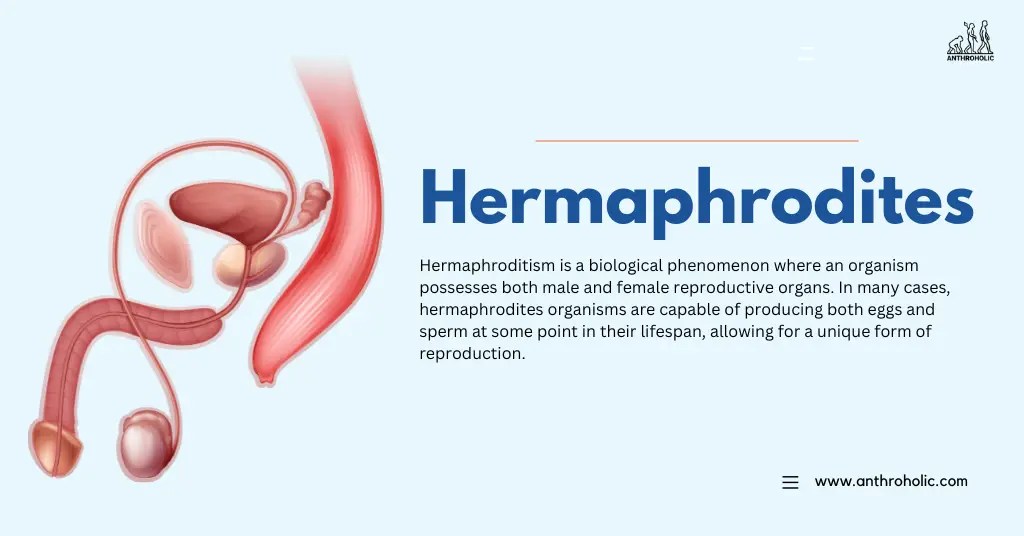In the vast spectrum of human diversity, hermaphroditism stands out as a fascinating phenomenon that challenges traditional notions of gender and sex. This article delves into the concept of hermaphroditism in humans, presenting various examples and discussing the biological, social, and cultural implications of being intersex. By understanding these examples, we can foster a more inclusive perspective on gender identity and expression. As we explore the lives of hermaphroditic individuals, we aim to highlight their experiences and the importance of acceptance in society.
The term "hermaphrodite" historically refers to organisms that possess both male and female reproductive organs. In humans, this condition is more accurately described as intersex, as it encompasses a variety of variations in sex characteristics. Intersex individuals may have ambiguous genitalia, chromosomal variations, or hormone discrepancies. This article will showcase notable hermaphrodite human examples, shedding light on their lives and contributions to society while dispelling myths and misconceptions surrounding intersex identities.
As we navigate through the intricacies of hermaphroditism, it's essential to recognize the importance of expertise, authoritativeness, and trustworthiness (E-E-A-T) in discussing sensitive topics like these. By providing well-researched information and personal stories, we aim to educate readers on the realities faced by intersex individuals and promote understanding and empathy. Let us embark on this enlightening journey into the world of hermaphrodite human examples.
Table of Contents
- What is Hermaphroditism?
- Biological Aspects of Hermaphroditism
- Famous Hermaphrodite Examples
- Social and Cultural Implications
- Challenges Faced by Intersex Individuals
- Advocacy and Acceptance
- Conclusion
What is Hermaphroditism?
Hermaphroditism refers to the condition in which an individual possesses both male and female reproductive organs. In humans, it is more accurately classified under the umbrella term "intersex," which encompasses various conditions in which an individual's reproductive or sexual anatomy does not fit typical definitions of male or female. This can be due to differences in chromosomes, hormones, or physical anatomy.
Biological Aspects of Hermaphroditism
Biologically, intersex conditions can arise from a variety of genetic and environmental factors. Below are some common intersex variations:
- Androgen Insensitivity Syndrome (AIS): Individuals with AIS have XY chromosomes but develop female physical traits due to the body's inability to respond to male hormones.
- Congenital Adrenal Hyperplasia (CAH): This condition affects hormone production, leading to ambiguous genitalia in genetic females.
- Turner Syndrome: A condition where a female is born with a single X chromosome, often resulting in underdeveloped ovaries.
- Klinefelter Syndrome: Males with an extra X chromosome (XXY) may have male and female characteristics.
Famous Hermaphrodite Examples
Example 1: Herculine Barbin
Herculine Barbin was a 19th-century French intersex individual whose life story has been studied extensively. Born in 1838, Barbin was assigned female at birth but later identified as male. His memoirs, published posthumously, offer a poignant glimpse into the struggles of living in a society that strictly categorizes gender.
Example 2: Billy Lee Tipton
Billy Lee Tipton was a famous American jazz musician, known for his work as a saxophonist and bandleader. Tipton, who identified as male, was born female and lived as a man for most of his life. His story highlights the complexities of gender identity and the societal expectations placed on individuals.
Example 3: Thomas Beatie
Thomas Beatie gained international attention as the "Pregnant Man" after publicly announcing his pregnancy in 2008. A transgender man who was assigned female at birth, Beatie's experience brought significant visibility to intersex and transgender issues, sparking conversations about gender identity and reproductive rights.
Social and Cultural Implications
The existence of hermaphroditic individuals challenges traditional views of gender and sexuality. In many cultures, rigid gender binaries are deeply ingrained, leading to discrimination and stigmatization of intersex individuals. Education and awareness are crucial in fostering a more inclusive society that respects and acknowledges diverse gender identities.
Challenges Faced by Intersex Individuals
Intersex individuals often encounter various challenges, including:
- Medical Interventions: Many intersex individuals undergo surgery or hormone treatment at an early age to conform to societal norms, often without their consent.
- Discrimination: Intersex individuals face discrimination in various aspects of life, including employment, healthcare, and education.
- Lack of Awareness: Misunderstanding and lack of information about intersex conditions can lead to stigma and isolation.
Advocacy and Acceptance
Advocacy for intersex rights is gaining momentum globally, with organizations working to raise awareness and promote acceptance. Key initiatives include:
- Education Programs: These programs aim to educate the public about intersex conditions and challenge harmful stereotypes.
- Legal Reforms: Advocates are pushing for laws that protect the rights of intersex individuals and prohibit non-consensual medical procedures.
- Support Networks: Many organizations provide resources and support for intersex individuals and their families, fostering community and understanding.
Conclusion
In conclusion, the exploration of hermaphrodite human examples reveals the rich tapestry of human diversity. Understanding and accepting intersex individuals is essential for fostering an inclusive society that respects all identities. By sharing their stories and advocating for their rights, we can challenge societal norms and promote a culture of acceptance. We encourage readers to engage in conversations about gender identity and to support intersex advocacy efforts. Please leave your comments, share this article, or explore more content on our site to deepen your understanding of this important topic.
References
- Intersex Society of North America. (n.d.). ISNA
- World Health Organization. (2020). WHO
- Human Rights Campaign. (n.d.). HRC


